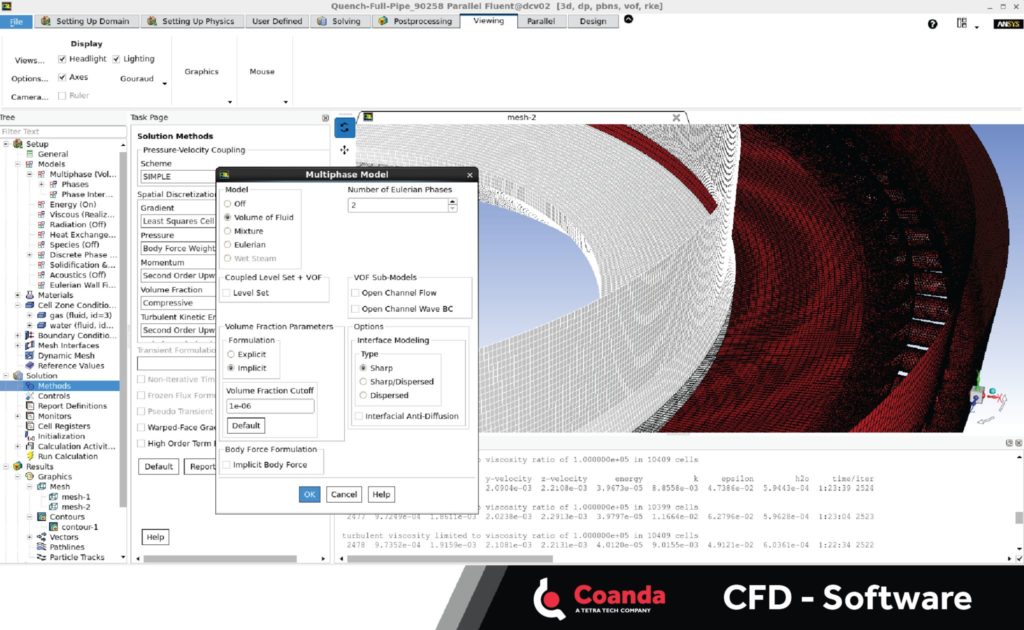CFD Hardware & Software
Posted on April 8, 2021 Computational Fluid Dynamics
This post was originally published in two parts which have been combined below

Part 1
CFD – Hardware
The practical application of Computational Fluid Dynamics (CFD) to a very wide range of industrial thermo-fluid processes is made possible due to High Performance Computing or HPC. HPC systems involve three main components—compute capability, network connectivity and data storage—and can take the form of a stand-alone workstation or an HPC cluster. An HPC workstation contains one or more multi-core CPUs with on-board memory and memory sharing, integrated graphics, and solid-state or hard-drive data storage. In contrast, an HPC cluster consists of many compute nodes or servers that are networked together and share common storage.
The individual servers or nodes of an HPC cluster consist of one or more multi-core CPUs, memory, and integrated network controllers that can be configured as either rack or blade servers, which are then inter-connected using Ethernet or InfiniBand network switches. The cluster is connected to data storage and also typically has a separate node for high-speed graphics. Coanda’s Linux-based HPC cluster consists of 42 compute nodes connected with an InfiniBand network—allowing software programs to access the 840 CPU-cores of the cluster.
Part 2
CFD – Software
While High Performance Computing (HPC) defines the essential hardware required for the practical application of Computational Fluid Dynamics (CFD) to a wide range of industrial thermo-fluid problems, the specialized software required to take advantage of parallel computing is even more important.
Parallel computing is defined as the simultaneous use of more than one processor to execute a program. This technique involves partitioning of the CFD mesh or grid into multiple sections—one for each processor to be used—and providing specific instructions to exchange data between the different processors. This inter-processor communication is achieved using message passing libraries such as MPI (Message Passing Interface), which allows the overall numerical solution to be calculated. The obvious benefit of this technique is the speedup factor, which can theoretically be equal to the number of processors used.
Commercially available CFD codes, such as ANSYS Fluent, not only implement optimized parallel algorithms for the solution of systems of linear equations, but also manage the partitioning and inter-processor communication to enable rapid solution of very large and complex thermo-fluid problems.



